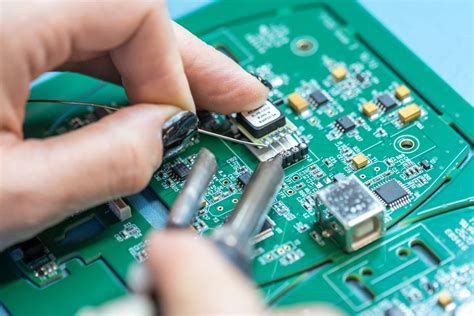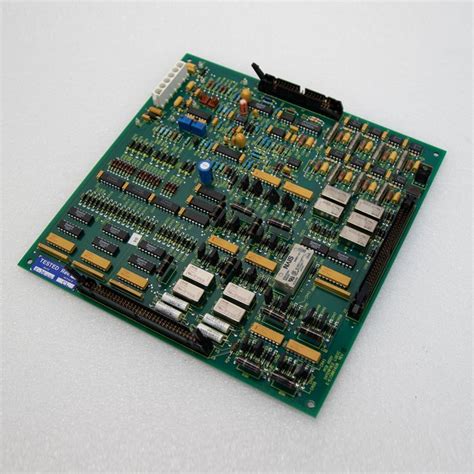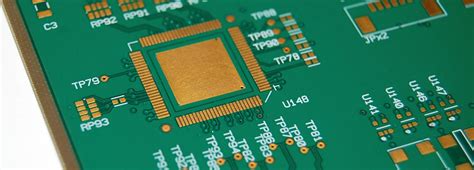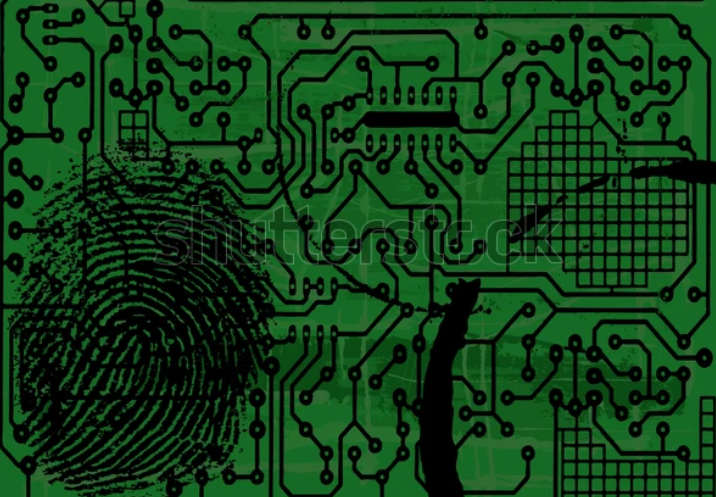How to cut fr4 pcb
Step-by-Step Guide to Cutting FR4 PCB Safely and Efficiently
Cutting FR4 PCBs, which are fiberglass-reinforced epoxy laminate sheets, is a task that requires precision and care. These boards are widely used in the electronics industry due to their excellent mechanical strength and electrical insulation properties.
However, their composition makes them challenging to cut without the right tools and techniques. To ensure a safe and efficient process, it is essential to follow a systematic approach.
First and foremost, gather the necessary tools and materials.
You will need a dust mask, safety goggles, a straight edge or ruler, a pencil or marker, a cutting tool such as a hacksaw, rotary tool, or a specialized PCB cutter, and sandpaper or a file for finishing edges. Wearing protective gear is crucial because cutting FR4 releases fine fiberglass dust, which can be harmful if inhaled or if it comes into contact with your eyes.
Begin by marking the cutting line on the PCB.
Use a pencil or marker to draw a precise line where the cut is needed. A straight edge or ruler will help ensure that the line is straight and accurate. Double-check your measurements before proceeding to avoid any mistakes that could lead to material wastage or the need for additional cuts.
Once the cutting line is marked, secure the PCB in place.
This can be done using clamps or a vise to hold the board steady. Ensuring that the PCB is firmly secured will prevent it from moving during the cutting process, which could result in uneven edges or damage to the board.
Next, choose the appropriate cutting tool.
A hacksaw is a common choice for straight cuts, while a rotary tool with a cutting wheel attachment can be used for more intricate shapes or curves. If you have access to a specialized PCB cutter, it can provide the cleanest and most precise cuts. Regardless of the tool you choose, make sure it is in good condition and suitable for cutting through fiberglass material.
Proceed with the cutting process by following the marked line carefully.
Apply steady, even pressure to avoid chipping or cracking the board. If using a rotary tool, maintain a consistent speed to ensure a smooth cut. Take your time and do not rush, as precision is key to achieving a professional finish.
After the cut is complete, inspect the edges of the PCB.
It is common for the edges to be rough or have small burrs. Use sandpaper or a file to smooth out these imperfections. This step not only improves the appearance of the board but also ensures that it fits properly into its intended application without causing any mechanical interference.
Finally, clean the work area thoroughly to remove any fiberglass dust and debris.
Proper disposal of these materials is important to maintain a safe and clean workspace. Additionally, remove and dispose of your protective gear carefully to avoid spreading fiberglass particles.
By following these steps, you can cut FR4 PCBs safely and efficiently, ensuring that your electronic projects are built on a solid foundation. With practice and attention to detail, you will be able to achieve precise cuts that meet the high standards required in the electronics industry.
Essential Tools for Cutting FR4 PCB: A Comprehensive Overview
Cutting FR4 PCBs, a common task in electronics prototyping and manufacturing, requires precision and the right set of tools to ensure clean and accurate results. FR4, a composite material made from woven fiberglass cloth with an epoxy resin binder, is widely used due to its excellent mechanical strength and electrical insulation properties. However, its robust nature also makes it challenging to cut without the appropriate equipment. Understanding the essential tools for this task is crucial for both hobbyists and professionals in the field.
To begin with, a high-quality PCB cutter or shear is indispensable.
These tools are specifically designed to handle the rigidity of FR4 material, providing a clean cut without damaging the board. PCB shears are particularly useful for straight cuts and are available in both manual and electric versions. Manual shears are suitable for small-scale projects, while electric shears offer efficiency and ease for larger volumes. Transitioning from manual to electric tools can significantly enhance productivity, especially in a professional setting.
For more intricate cuts, a rotary tool equipped with a fiberglass cutting wheel is highly recommended. Rotary tools offer versatility and precision, allowing users to make detailed cuts and shapes that are not possible with standard shears. When using a rotary tool, it is essential to wear protective gear, such as safety goggles and a dust mask, as cutting FR4 generates fine dust particles that can be harmful if inhaled. Additionally, securing the PCB on a stable surface with clamps can prevent movement during cutting, ensuring accuracy and safety.
Another essential tool is a scoring knife, which is ideal for making straight cuts on thinner FR4 boards. The scoring method involves making a deep incision along the desired line and then snapping the board along the score. This technique is cost-effective and straightforward, making it a popular choice for hobbyists working with small projects. However, it is less suitable for thicker boards, where more robust tools are necessary.
For those who require precision and minimal material wastage, a CNC milling machine is an excellent investment.
CNC machines offer unparalleled accuracy and can handle complex designs with ease. They are particularly beneficial for professional environments where high precision is paramount. Although the initial investment is significant, the long-term benefits in terms of efficiency and quality make it worthwhile for serious PCB manufacturers.
In addition to these cutting tools, having a reliable set of measuring instruments is crucial.
Calipers and rulers ensure that measurements are accurate before any cutting begins, reducing the risk of errors. Furthermore, a clean and organized workspace contributes to better results, as it minimizes distractions and potential hazards.
In conclusion, cutting FR4 PCBs requires a combination of the right tools and techniques to achieve the desired outcome. From PCB shears and rotary tools to CNC machines, each tool serves a specific purpose and caters to different project needs. By understanding the capabilities and limitations of each tool, users can make informed decisions that enhance their cutting process. As technology advances, the availability of more sophisticated tools continues to improve the efficiency and precision of PCB cutting, making it an ever-evolving field that demands both skill and knowledge.

Common Mistakes to Avoid When Cutting FR4 PCB
Cutting FR4 PCBs, a common task in electronics manufacturing and prototyping, requires precision and care to ensure the integrity of the board and the components it will support. However, several common mistakes can compromise the quality of the cut and, consequently, the functionality of the PCB. Understanding these pitfalls and how to avoid them is crucial for anyone working with FR4 material.
One frequent mistake is neglecting to use the appropriate tools for cutting.
FR4, a composite material made of woven fiberglass cloth with an epoxy resin binder, is known for its durability and resistance to heat. However, this same robustness can make it challenging to cut without the right equipment. Using inappropriate tools, such as standard scissors or utility knives, can lead to uneven edges and potential delamination.
Instead, it is advisable to use specialized tools like a PCB shear or a carbide-tipped saw blade, which are designed to handle the toughness of FR4 material.
Another common error is failing to secure the PCB properly before cutting. Movement during the cutting process can result in jagged edges and inaccurate dimensions, which can affect the board’s fit and function in its intended application. To prevent this, it is essential to firmly clamp the PCB in place, ensuring it remains stationary throughout the cutting process. This not only helps achieve a clean cut but also minimizes the risk of injury from slipping tools.
Moreover, overlooking the importance of personal protective equipment (PPE) is a mistake that can have serious health implications.
Cutting FR4 releases fine dust particles that can be harmful if inhaled. Therefore, wearing a dust mask or respirator is crucial to protect the respiratory system. Additionally, safety goggles should be worn to shield the eyes from any debris. By prioritizing safety, one can avoid health risks while maintaining focus on achieving precise cuts.
In addition to these considerations, it is important to account for the kerf, or the width of the cut made by the saw blade. Failing to do so can lead to inaccuracies in the final dimensions of the PCB. When planning the cut, one should measure and mark the board with the kerf in mind, ensuring that the final piece meets the required specifications. This attention to detail can prevent costly errors and the need for rework.
Furthermore, rushing the cutting process is a mistake that can compromise both safety and quality. Cutting FR4 requires patience and a steady hand to ensure clean, precise edges. Hasty cuts can lead to chipping or cracking, which may necessitate additional sanding or even replacement of the board. Taking the time to cut slowly and methodically will yield better results and reduce the likelihood of errors.
Finally, neglecting to clean the work area after cutting is a mistake that can affect subsequent projects.
FR4 dust can settle on tools and surfaces, potentially contaminating other materials or causing wear on equipment. Regular cleaning and maintenance of the workspace help maintain a safe and efficient environment for future tasks.
In conclusion, cutting FR4 PCBs involves more than just slicing through a board; it requires careful planning, the right tools, and a focus on safety. By avoiding these common mistakes, one can ensure that the cutting process is both effective and safe, resulting in high-quality PCBs ready for their intended applications.
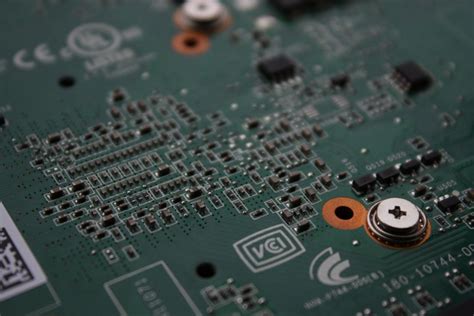
Innovative Techniques for Precision Cutting of FR4 PCB
Cutting FR4 PCBs, a common material used in the manufacturing of printed circuit boards, requires precision and care to ensure the integrity of the board is maintained. FR4, a composite material made from woven fiberglass cloth with an epoxy resin binder, is known for its excellent strength-to-weight ratio and electrical insulation properties. However, its rigidity and toughness can pose challenges during the cutting process. Therefore, employing innovative techniques is essential for achieving precise cuts without damaging the board.
One of the most effective methods for cutting FR4 PCBs is using a CNC (Computer Numerical Control) machine.
CNC machines offer high precision and repeatability, making them ideal for intricate designs and complex shapes. By programming the machine with the exact dimensions and patterns required, manufacturers can achieve consistent results with minimal human error.
Additionally, CNC machines can handle large volumes of work, making them suitable for both prototyping and mass production.
The use of carbide or diamond-coated bits is recommended, as these materials can withstand the abrasive nature of FR4 and maintain sharpness over extended periods.
Another technique gaining popularity is laser cutting.
Laser cutting provides a non-contact method of slicing through FR4, reducing the risk of mechanical stress and potential damage to the board. The precision of laser cutting is unmatched, allowing for intricate designs and fine details that might be challenging with traditional methods. Moreover, laser cutting is highly efficient, with the ability to cut multiple boards simultaneously, thus increasing productivity. However, it is crucial to control the laser’s power and speed settings to prevent overheating, which could lead to charring or delamination of the board.
For those seeking a more manual approach, using a scoring and snapping method can be effective for simple, straight cuts.
This technique involves scoring the surface of the FR4 with a sharp blade along the desired cut line, then applying pressure to snap the board along the score.
While this method is cost-effective and requires minimal equipment, it demands a steady hand and careful measurement to ensure accuracy. It is best suited for small-scale projects or when access to advanced machinery is limited.
Waterjet cutting is another innovative technique that has been adapted for use with FR4 PCBs.
This method employs a high-pressure stream of water mixed with an abrasive substance to cut through the material. Waterjet cutting is advantageous because it does not generate heat, thus eliminating the risk of thermal damage to the board. Additionally, it can cut through thick materials and produce smooth edges, reducing the need for post-processing. However, the initial setup cost for waterjet cutting can be high, making it more suitable for larger operations.
In conclusion, the choice of cutting technique for FR4 PCBs depends on several factors, including the complexity of the design, the volume of production, and available resources.
CNC machining and laser cutting offer high precision and efficiency, making them ideal for complex and large-scale projects. Meanwhile, scoring and snapping provide a simple, low-cost solution for straightforward cuts. Waterjet cutting, though costly, offers unique advantages in terms of edge quality and material preservation. By understanding the strengths and limitations of each method, manufacturers can select the most appropriate technique to achieve precise and reliable results in their PCB production processes.

